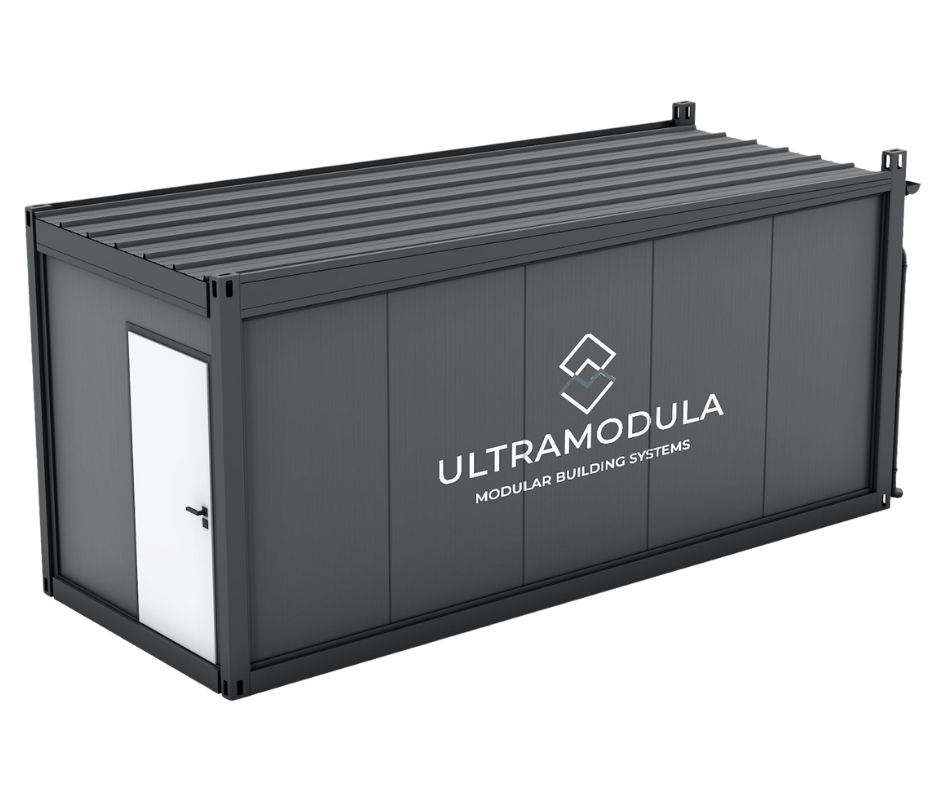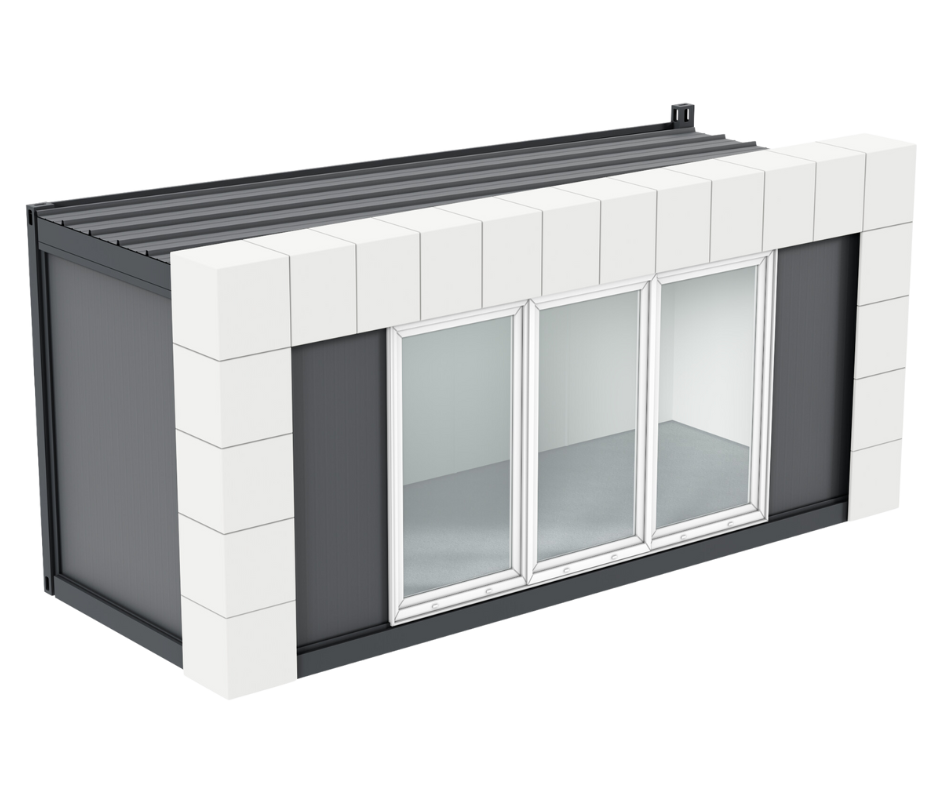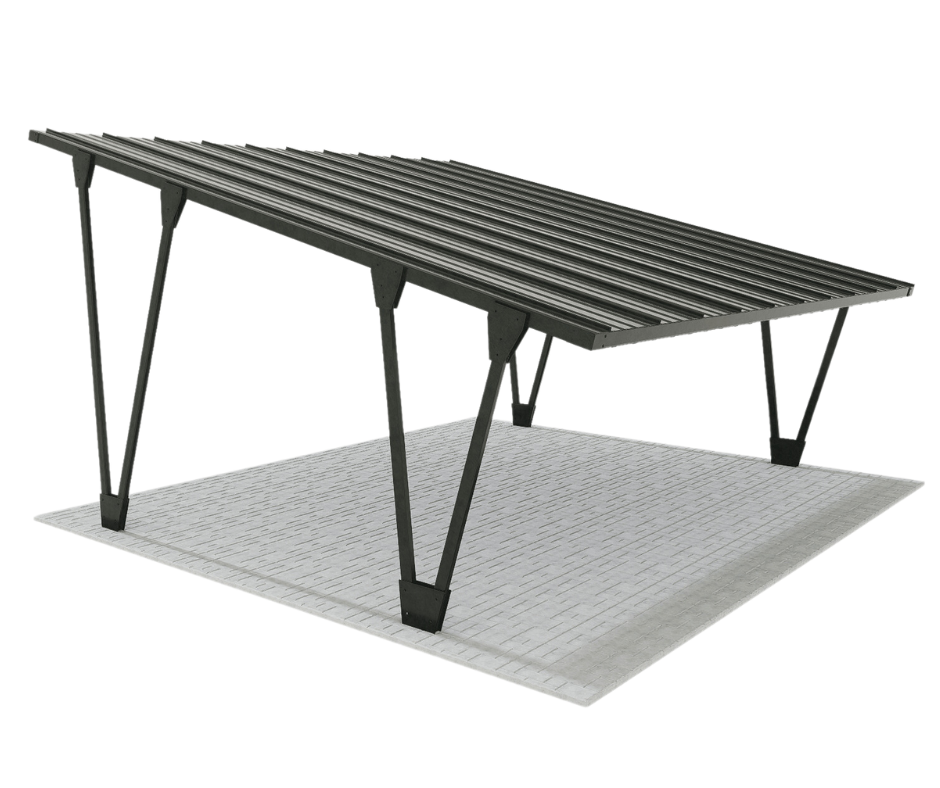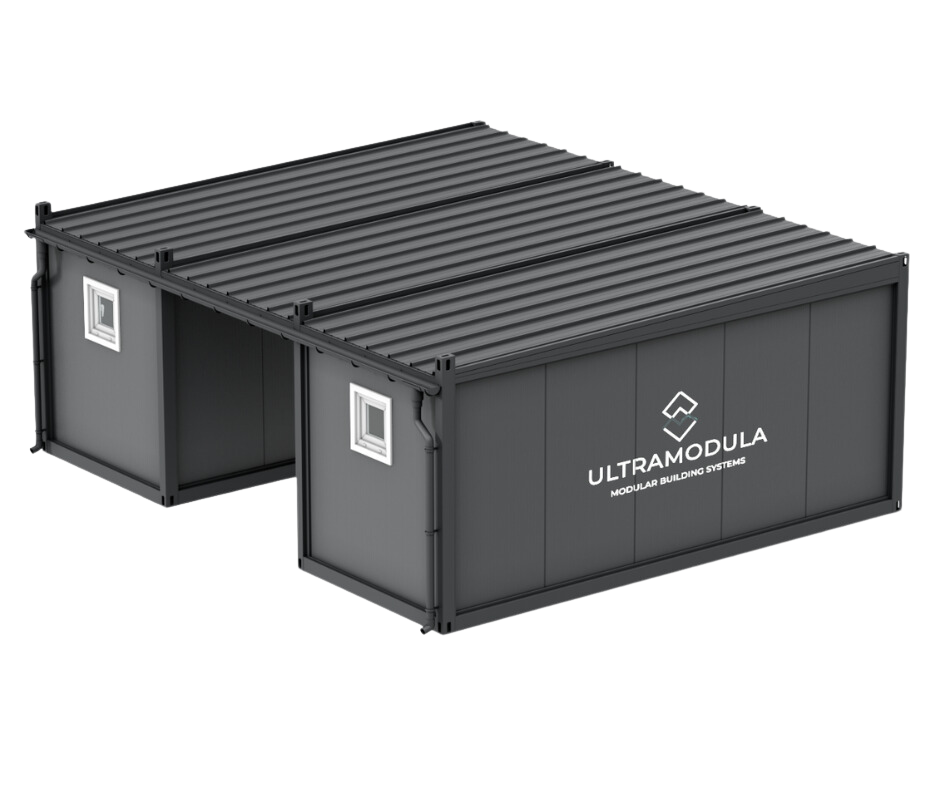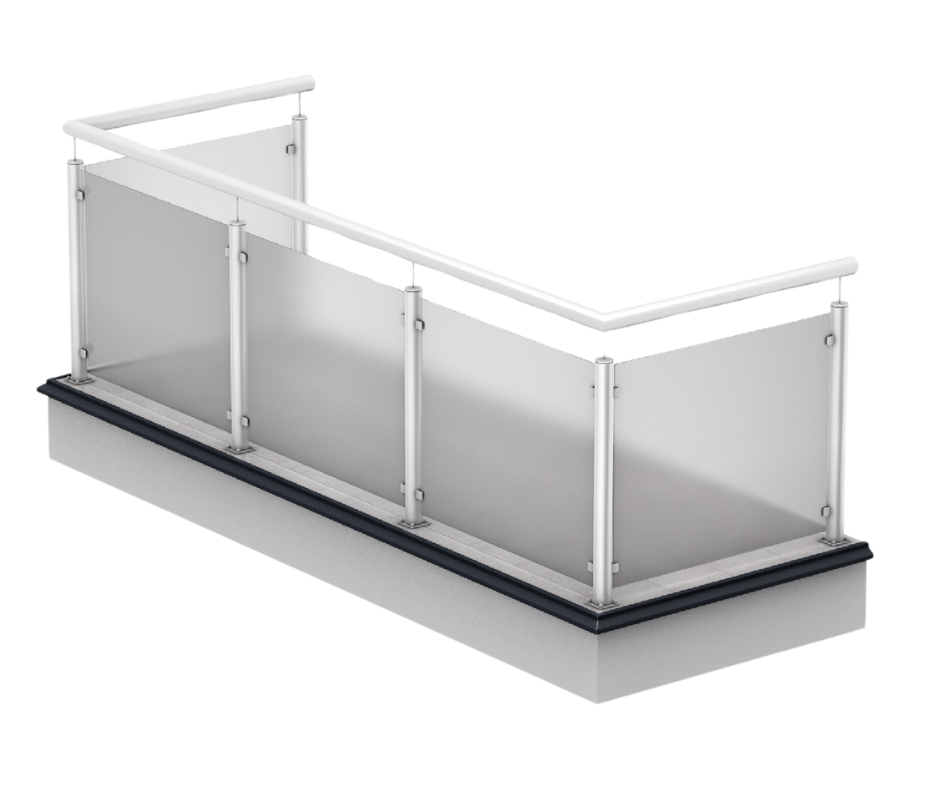Ergonomics, the science of adapting the work environment to the needs of employees, becomes particularly important in this context container offices. With the growing popularity of these modern structures, office interior designers must be aware not only of aesthetics, but also of the impact of the work environment on employee efficiency and well-being. In the small spaces that they are containers the importance of good, ergonomic design is particularly important. Striving to optimize work efficiency and create a functional and at the same time aesthetic space requires designers not only to be creative, but also to have deep knowledge of the principles of ergonomics.
Ergonomics in container offices – what does it really mean?
Ergonomics is an interdisciplinary field of science that studies the relationship between people and their work environment. In the case of container offices, where space is limited and a dynamic work environment requires flexible solutions, precise application of ergonomic principles is an important factor influencing the efficiency of enterprises and organizations. The primary goal is to adapt working conditions to human needs, increasing efficiency and everyday comfort, and reducing the negative impact on employees' health.
Keep in mind that offices container Due to their specific structure and limited dimensions, they pose significant challenges to designers when it comes to the ergonomic design of office space. In this context, it becomes necessary to thoroughly understand the needs of users and adapt the design to space constraints. It is worth emphasizing that ergonomics in container offices is not limited only to adapting furniture or accessories to the comfort of users. It covers a wide range of aspects that affect the well-being and performance of employees. Elements such as space organization, lighting, acoustics, ventilation and access to natural light are key to creating an ergonomic working environment.
Interior design of container offices – space planning and optimization
Designing the interior of container offices is a challenge that requires not only creativity, but also careful planning and optimization of space. This requires a holistic approach, taking into account needs analysis, space adjustment and layout, as well as all necessary installations.
Needs analysis
The first stage in the process of ergonomic office design container is to precisely determine the real needs related to usable space. This demand will result from the number and size of workstations to be installed office, as well as the role that specific rooms will play on a daily basis and what activities they will be dedicated to. If the priority is to create a comfortable place for conducting business meetings, it is necessary to provide adequate space for conference rooms and comfortable social facilities. However, if the company needs to store extensive documentation, it will be necessary to provide additional space for the archive.
It is also worth defining precisely the nature of the work performed by determining whether a place for concentrated work is needed or whether most tasks are carried out in the form of teamwork, as well as by verifying how many employees conduct intensive telephone conversations during work, which require a separate space. The answers to these questions will allow you to adjust not only the required area, but will also make it easier for the designer to ergonomically separate functional zones in the office.
It should be emphasized that a thorough analysis of needs is crucial for the effective use of available space. It allows you to avoid excessive crowding and adapt the interior to the specific requirements of the company, creating optimal, ergonomic working conditions for the team.
Ergonomic and functional space planning
One of the key aspects of ergonomic space design is the division of the interior of container offices into clearly defined functional zones, resulting from the tasks performed and the work style of a given company or organization. The most frequently separated zones are:
- individual work zone, which includes ergonomic workstations with adequate space for equipment and documents;
- team work zones, such as meeting rooms, conference rooms, or inspiring spaces for creative work, with access to appropriate tools and materials;
- social zone, i.e. a place equipped with a kitchen or a corner for preparing meals and drinks, as well as toilets (may have showers);
- a relaxation zone usually equipped with soft seats, poufs, coffee tables and plants.
Work efficiency and user comfort are influenced by the skillful arrangement of individual zones - this is an important element of ergonomic design. For example, a creative work zone should not be located near individual work areas, because loud discussions may distract people working in concentration. In turn, zones social should be located close to conference rooms, because this is a place where guests are often received and offered coffee, tea or snacks. A good functional plan is one that facilitates daily performance of duties, speeds up processes and increases employee comfort.
Installations tailored to ergonomic design
An important element of comfort and ergonomics container office there are optimally planned installations: sanitary, heating and electrical with lighting. By choosing container office from a reputable manufacturer, you can use the help of experienced experts. This is a valuable asset because planning an installation is a complicated matter, and any mistake will result in problems in the future. When it comes to sanitary facilities, we cannot forget that many aspects are defined by occupational health and safety regulations. The support of people with experience is even more important here.
The conditions that must be met by the workplace of people, regardless of the industry, are set out in the Regulation of the Minister of Labor and Social Policy on general occupational health and safety regulations in par. 15: Work rooms and their equipment should provide employees with safe and hygienic working conditions. In particular, in work rooms, natural and artificial lighting, appropriate temperature, air exchange and protection against moisture, unfavorable thermal conditions and sunlight, vibrations and other factors harmful to health and nuisance should be provided.
As you can see, the regulations also emphasize that the employer is obliged to provide employees with the appropriate temperature - therefore, it is necessary to design a heating installation to guarantee heat in the winter season and air conditioning in the summer months.
It is also worth using the help of specialists in the development of electrical installations. After determining the spatial plan, they will prepare a detailed plan, taking into account the necessary sockets, lighting and, if necessary, power sockets. Because such a project requires specialized knowledge and experience in construction containers, it is not worth the risk of using the services of an unproven company or preparing the plan yourself.
Ergonomic lighting and office furniture
Without effective lighting, access to natural light, as well as comfortable and functional office furniture, it is impossible to create an ergonomic interior design for a container office. Particular attention should be paid to access to natural light through appropriate arrangement of windows - this is definitely the best for health and work comfort. By choosing office container from an experienced manufacturer, it is possible to adjust the number, size and location of windows to the previously developed functional design.
And although natural light is certainly the most beneficial for eye health, it is necessary to supplement it with artificial lighting - in this area it is recommended to invest in an office container equipped with LED lamps. They offer light colors close to natural, which is particularly good for the eyesight, especially when working at a computer. Additionally, they use minimal amounts of electricity, which translates into savings and reduces the negative impact on the natural environment.
Another important element of ergonomic office equipment container are furniture office. The key to success is to pay attention to their functionality. Maintaining order in the office will certainly be easier thanks to desks with spacious drawers or extensions with shelves. Multifunctional furniture, such as a document container with an upholstered cover serving as an additional seat, will help you optimally use every meter of space. Openwork shelves can act as partitions, while still remaining a natural storage space.
However, ergonomics should be the most important thing. There are many different solutions on the market supporting the health of employees, such as office chairs with a wide range of adjustments, sit & stand desks with the ability to work both sitting and standing (with manual or electric adjustment), balls or balancing stools that improve the health of the spine. Regardless of whether container office is dedicated to several or several dozen people, care for comfort and well-being must be a priority.
Ergonomics and interior design of container offices is a process
Ergonomics in container offices is a dynamic process aimed at creating a work environment that supports the health and comfort of employees. It is not just a matter of initially arranging the furniture or adjusting the lighting. It is also important to understand and observe how employees use these spaces every day. Monitoring work habits, adapting ergonomics to the changing needs of the team and ongoing improvements become key elements of maintaining an ergonomic office space. It is also important to involve employees in the process of adapting the space. Their opinions, suggestions and feedback are an invaluable source of information, enabling better adaptation of the office to the real needs of users.
See the offer at:


